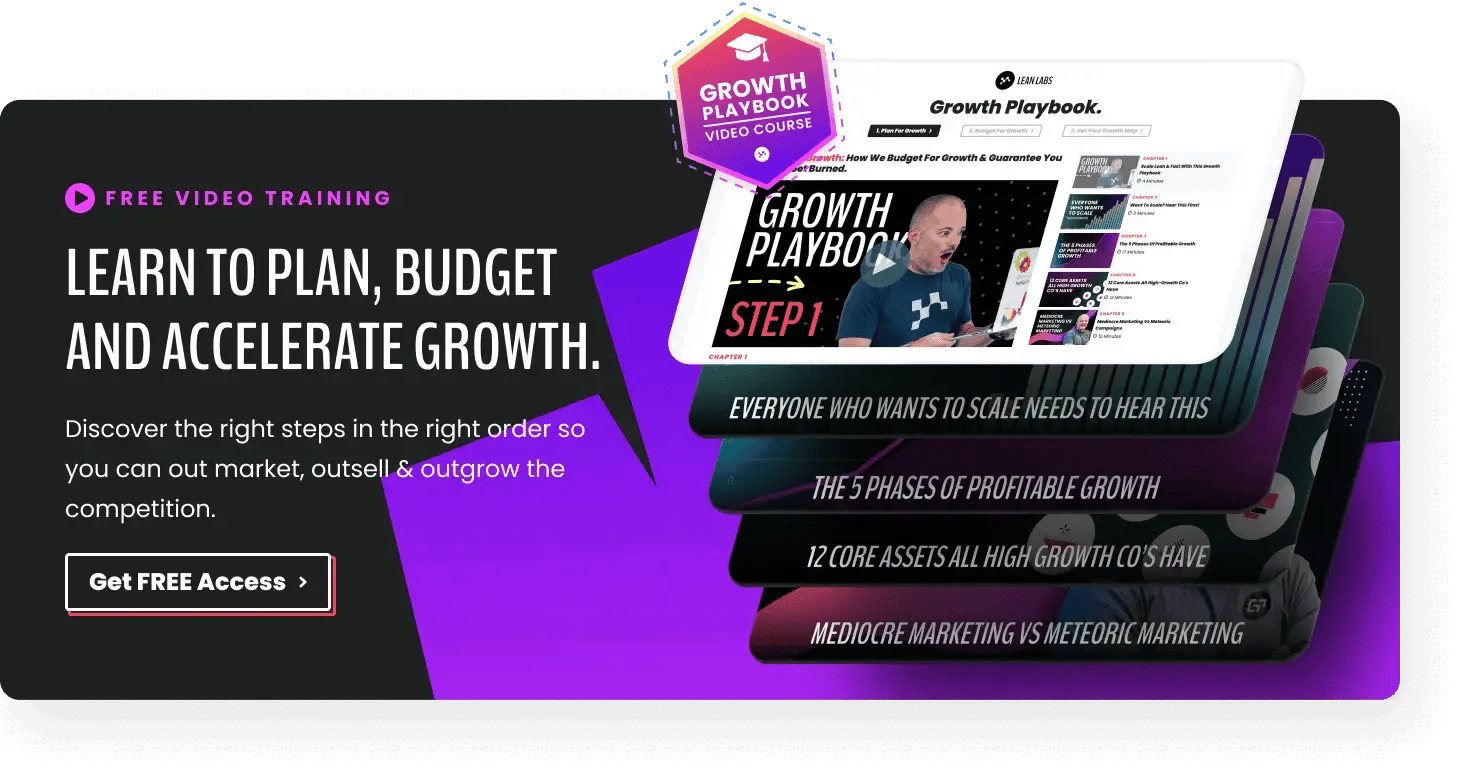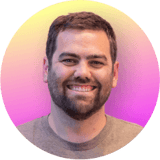In January 2015, Slack was a little-known business messaging app, born out of the ashes of a failed gaming startup. They had less than half a million users and had generated less than 12 million in revenue during the previous year.
Just 3 years later, in May of 2018, they had over 8 million active users (a 1500% increase) and finished the year with an impressive 220.5 million in revenue.
The secret to their success? An unstoppable SaaS go-to-market strategy paired with perfect market timing.
While very few SaaS startups can replicate Slack’s remarkable results, we can learn from the strategies that they and other successful startups employed in the early days.
We’ve also included a few examples of successful SaaS go-to-market strategies so you can see how this process plays out in the real world.
A holistic go-to-market strategy describes:
- Your ideal customer and their jobs-to-be-done
- The competitive landscape and how your product fits into it
- Your unique value proposition and how it will be positioned
- Your growth methodology: product-led vs sales-led, ABM vs traditional lead generation
- The channels you will acquire new customers through
- Which metrics you’ll use to measure and optimize growth
Why Develop a Go-to-Market Strategy for Your SaaS Company?
A clear and specific go-to-market strategy helps your team stay aligned and move in the same direction. By collaborating across departments to create your go-to-market strategy, you can guarantee business-wide buy-in.
It’s essential that everyone in your organization knows who you serve, how your product is being positioned in the market, and how the business is acquiring and retaining new users.
Businesses that fail to develop and follow a unified go-to-market strategy often deal with problems like:
- Frequent disagreements between sales and marketing about lead quality
- Wasted effort developing features that the ideal customer doesn’t care about
- Misaligned messaging between marketing, sales, product, and success teams, resulting in confusion for the end user
The SaaS industry moves fast. The product is constantly evolving to serve users better. By maintaining consistent alignment across departments, you can create a cohesive, positive experience for users. And happy users are the prerequisite to growth.
VIDEO TRAINING
Nail Your Go-To-Market Strategy With This Proven Playbook.
Learn to plan, budget, and accelerate growth with our exclusive video series. You’ll discover:
- The 5 phases of profitable growth
- 12 core assets all high-growth companies have
- Difference between mediocre marketing and meteoric campaigns
Thanks for submitting the form!
We'll review the information you've submitted and respond to you just as soon as possible.
8 Steps to Building a Winning SaaS Go-to-Market Strategy
1. Perform Customer Development
2. Analyze the Competitive Landscape
3. Define Your Unique Value Proposition
4. Test Messaging for Stickiness
5. Build Your Buyer’s Journey
6. Choose Your Channels
7. Launch Your Go-To-Market Strategy
8. Review Results & Refine
.jpg?width=3500&height=1969&name=final%20infographic%20(1).jpg)
Step 1: Perform Customer Development
Who do you serve? Customer development is about developing an extremely clear picture of your ideal customer. Not just their demographics but their interests, how they spend their time, who they admire and trust, their values and motivations, their fears and doubts… who they are.
It’s important to understand their specific jobs to be done and problems as they relate to your product. How does your solution fit into their life?
Customer development cannot occur in a vacuum. You need to “get out of the office,” so to speak. Go talk to people. Have non-sales conversations with active users, leads who haven’t signed up, and people who have never heard of you.
Try to identify the type of user who has the greatest need for your product, a “bleeding neck problem”.
Questions to address:
- Who cares most about the problem that our product solves?
- Who is willing and able to afford our product?
- Who loves our unique approach to solving the problem?
Use this data to generate buyer personas for the 2-3 types of users who are the best fit for your product.
Step 2: Complete Competitive Analysis
Some companies are afraid to talk about their competition. They’d rather bury their head in the sand and pretend that they have no competitors. But this is never the case.
The reality is that your prospects are comparing you to alternatives. Whether the alternatives are other SaaS products, spreadsheets, or some other workaround.
It’s essential to understand the competitive landscape that customers are considering you within. Where do you fit? Are you the low-cost alternative? The easiest to use? The most reliable?
Taking the time to research your space will help you find a corner that you can uniquely own. Research alternatives on Google, LinkedIn, in forums, and, most importantly, by asking prospects how they are currently solving this problem and what alternatives they’re considering.
For each alternative, you should try to define
- Their primary advantage
- Who their the best fit for
- Social proof– what do users say about them
- Their limitations– what problems or limitations will users experience with this option
Use these learnings in your marketing and in sales calls to show prospects that you are an expert on the space and you can guide them in making the best decision for their specific needs.
Step 3: Define Your Unique Value Proposition
Your unique value proposition (UVP) is a short, clear description of how you serve customers: what is the core benefit of your product and how are you different from the competition?
Also known as a unique selling proposition, the UVP should be compelling and easy to understand for your ideal customers.
Examples of strong UVPs:
- “Find Yourself Outside: Discover and book tent camping, RV parks, cabins, treehouses, and glamping.” -Hipcamp
- “Create and close more pipeline: The Outreach Sales Execution Platform helps your sales team efficiently create pipeline and close more deals.” - Outreach
- “Growth & Profit, Guaranteed: We help SaaS & Tech brands as their outsourced growth team to scale lead generation & profitable customer acquisition.” -Lean Labs
Related: 16 Companies Who Absolutely Nailed Their Unique Value Proposition
Step 4: Test Messaging for Stickiness
A “sticky” message sticks in people's heads and is easy for them to share. If you want your message to stick and spread, make sure that it is clear and easy to remember.
Chip Heath, the author of Made to Stick, says there are six principles to crafting a sticky message: Simplicity, unexpectedness, concreteness, credibility, emotions, and stories. Messages that stick are simple, surprising, and emotional.
The only way to know if your message is sticky is to test it. Test different messaging in ads, social posts, landing pages, and in CTAs. Analyze which messaging gets the most clicks and which message attracts and converts your ideal customer.
Step 5: Build Your Buyer’s Journey
The buyer’s journey is the process by which prospects become aware of your product and then make a purchase.
According to ActiveCampaign, buyers move through five phases
- Unaware: They don’t know they have a problem.
- Problem Aware: They know they have a problem, but don’t know there are solutions.
- Solution Aware: They know there are solutions, but haven’t chosen one.
- Product Aware: They know about your product, but aren’t sure it will solve their problem.
- Most Aware: They know a lot about your product, and are considering buying.
Building your buyer’s journey is about creating website pages and assets that act as stepping stones for moving prospects toward being ready to buy your product.
Users in the “problem-aware” stage, the cold audience, need your help to better understand the problem and truly grasp how it is affecting them. Create a problem/cold page to educate users about their problems.
Users in the “solution-aware” stage are educating themselves about alternatives. They are trying to understand what is the best way to solve their problem. What is the best methodology or tool to help them overcome the problem? Create a methodology/warm page describing the methodology that your software uses to solve their problem.
Users in the “product aware” stage know about your product and understand the basics of how it can help them. They need your help to overcome internal and external objections: how does your product fits into their existing workflow? What are the limitations? Is it worth the price? Create a product/hot page to educate users about your solution and how it can help them.
Step 6: Choose Your Channels
Where are you going to put your message so that your ideal customer can find it? Acquisition channels drive traffic to your website and generate leads. While there are many possible channels, the most successful companies start by choosing just 1-3 channels to focus on first.
Trying to reach customers in too many channels will dilute your budget and focus so that you’re less effective overall.
Pick your focus channels based on where your ideal customers hang out online and look for answers to their questions. If you’re ideal customers get their information from podcasts, then launch a podcast and be a guest on industry shows. If they prefer to Google their questions, then SEO should be a focus.
Some channels to consider include:
- SEO
- Blog
- Google PPC
- Podcast
- Facebook/ LinkedIn/ Instagram/ TikTok (organic and paid)
- Youtube
- Industry groups and forums
- Events (in-person and virtual)
Step 7: Launch Your SaaS Go-To-Market Strategy
You’re finally ready for the big launch!
You’ve taken the time to develop a deep understanding of your ideal customer, their problems and goals, how your product fits into their life, and compares with alternatives. You’ve built a buyer’s journey to move prospects toward a sale, and you’ve chosen the first channels to focus on.
Determine what is required for a successful launch. Do you need to build a new website? Create a content marketing plan? Set up audiences for your paid ads? Book a booth at next year’s SaaStr?
When everything is set up and ready, go live with your new go-to-market.
Step 8: Review Results & Refine
This may be the most important step of the process. Your go-to-market cannot be something that you set and forget.
Winning SaaS brands are obsessed with iterating: not just on their product, but their entire go-to-market strategy. These aren’t random changes or based on how you ‘feel’; go-to-market iteration must be data-driven.
Make sure that you have reliable data analytics set up on your web pages, landing pages, and ads, and that you have a robust CRM that your sales team uses consistently to track the quality and outcome of their conversations with leads.
Related: HubSpot vs. Salesforce: Which CRM is Best?
Use the data you gather to answer questions like
- Are we targeting the right customer profile?
- Are the leads we’re attracting eager and able to buy?
- Which segment of users has the lowest churn rate?
- Which segment has the lowest CAC?
- Which channel is driving the highest volume of leads? What about the highest quality leads?
- What are the conversion rates of our web pages, landing pages, ads, etc.?
Your team should analyze data on at least a monthly basis, and use the findings to adjust your go-to-market strategy.
If the metrics aren’t strong, look for opportunities to optimize copy, visuals, and targeting. The goal is to achieve consistently profitable customer acquisition, which typically means that LTV is four to five times greater than CAC.
3 Examples of Successful SaaS Go-to-Market Strategy
Slack
Slack’s growth story is almost cliche by this point. But that doesn’t mean there’s nothing we can learn.
Slack is a team messaging and collaboration app. From 2014 to 2018, they grew from a handful of users to over eight million active users. Their go-to-market strategy included a few essential pieces
- Word of mouth: the Slack product is inherently collaborative- it’s better with friends. Virality is built into the product itself, with easy ways to invite friends and colleagues.
- Freemium: Slack removed friction in the adoption process by making their core product free to use. That way, users can create an account and start getting value in minutes without paying a cent. And, of course, a certain percentage of companies ascend to a paid plan.
- Bottom-up approach: Slack didn’t waste time cold calling and pitching fortune-500 executives. Instead, they got the employees hooked on the product. Team members would invite each other, and the product would go viral within the company. Then, once everyone at the company already loved the product, the leadership team had no choice but to adopt Slack company-wide (with a paid subscription).
- Integrations: As they grew, Slack began integrating with other essential tools that their users were using every day. By integrating natively with the rest of their tech stack, Slack made themselves an irreplaceable collaboration hub within organizations.
Vidyard
Vidyard is a video software used by sales teams and for internal communications within companies. In contrast to Slack, Vidyard started out as an enterprise-focused tool, only available to companies with over two hundred employees.
This initial focus on big businesses provided them with capital to iterate on the product and improve functionality.
Over time, their sales team noticed there was significant demand for their product from the smaller businesses that they were turning away. Seeing an opportunity to expand, Vidyard launch a free version of the product and removed the barrier for smaller businesses. This move brought in 20,000 new companies in a single year, many of whom would ascend to a paid plan for additional functionality.
Some of the key levers for Vidyard pulled included
- Reverse freemium: By starting out focused on enterprises, Vidyard built a robust and reliable product before moving down market to accelerate growth.
- Usability: the product is incredibly easy to use. With one click, you can record your face or screen and instantly publish the video on your website, send it in an email, or add it to a marketing campaign. And with the browser extension, users can start recording anywhere, anytime.
- Strategic partnerships: In 2016, Vidyard launched a partnership with HubSpot. Overnight, thousands of HubSpot users were able to access Vidyard’s product from within their HubSpot account. This led to a significant increase in brand awareness and adoption.
Sprocket Rocket
Sprocket Rocket is a design tool for HubSpot CMS. Marketers use Sprocket Rocket to build beautiful, unique, high-converting website experiences without needing to code.
The team at Lean Labs actually built Sprocket Rocket to use as a premium HubSpot design tool for all of our website projects.
Some key elements of the Sprocket Rocket go-to-market strategy include
- Dialed positioning for a niche market: Sprocket Rocket isn’t for everyone, but it’s the number 1 design tool for non-technical marketers building websites on HubSpot.
- Freemium model: by creating a free theme and listing it in the HubSpot marketplace, new users can discover our product and try it risk-free. And those that want premium features, modules, and templates ascend to the paid product.
- Relentless focus on customer support and user experience: our support team is responsive and helpful. They quickly resolve issues and will often build custom solutions for user's problems.
- Co-marketing with HubSpot: Sprocket Rocket has hosted multiple events in tandem with HubSpot. They recently asked us to do a training on HubSpot CMS for agencies. We cohosted a webinar with hundreds of business owners to give training and tips for getting the most out of HubSpot CMS using Sprocket Rocket.
Crushing Your SaaS Go-to-Market Strategy
A well-planned, effective SaaS go-to-market strategy is often the difference between massive success and mediocre results. An “if you build it, they will come” mentality will leave you with a great product that no one has ever heard of.
By following the steps laid out in this article, you will greatly improve the chances that your SaaS company will achieve product-market fit and grow profitably.
Focus on your unit economics: if you can’t acquire customers profitably, you will run into major challenges when trying to scale.
The biggest mistake that most SaaS startups make is rushing to market.
Successful companies take the time to build an effective go-to-market strategy, measure results, and iterate their way to profitable customer acquisition.
If you want to see the exact growth methodology that we use to 10x growth for the SaaS startups and scaleups that we work with, check out our free resource The Growth Playbook. This training will show you where to focus your efforts and what steps to follow to achieve remarkable, reliable growth.

.jpg?width=3500&height=1969&name=final%20infographic%20(1).jpg)






